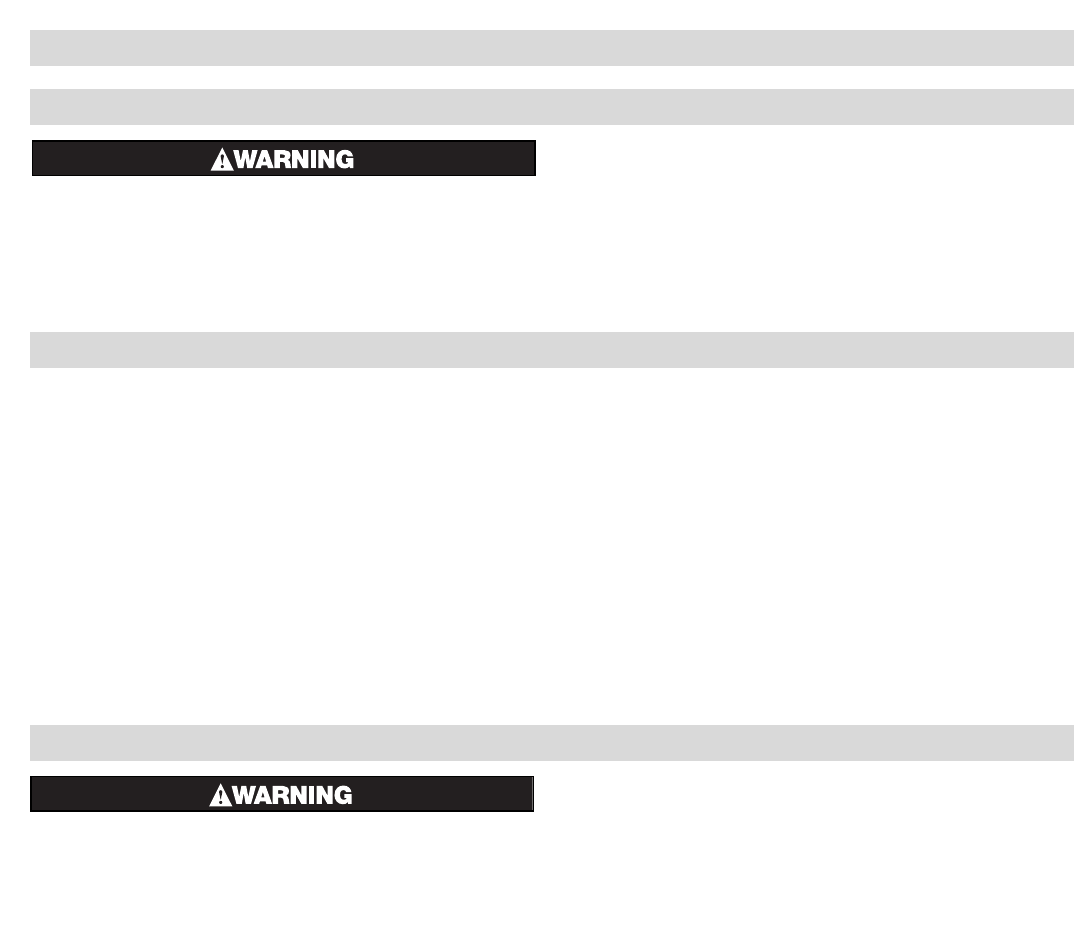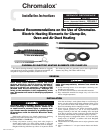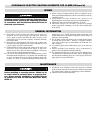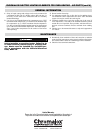
WIRING
GENERAL INFORMATION
MAINTENANCE
ELECTRIC SHOCK HAZARD. Any installation
involving electric heaters must be performed by a
qualified person and must be effectively grounded
in accordance with the National Electrical Code to
eliminate shock hazard.
1. Electric wiring to heating elements must be installed in accor-
dance with National Electrical Code or local electrical codes by
a qualified person.
2. Temperatures at heater terminals may require use of
high-temperature wire. Check factory for recommendations.
3. Maximum torque on strip heater terminals is 25 in-lbs.
4. Maximum tourque on secondary insulation bushings
used in strip heater mounting is 40 in-lbs; (Part # 00036-001)
PCN 255716
1. Strip heaters of equal wattage and voltage may be series con-
nected for use on a power supply up to 480 volts. Where the
power supply is greater than 480 volts (600 volt max.) series
connections may be used but secondary insulation bushings
must be provided.
2. Ring heaters of equal wattage and voltage with a surface tem-
perature of less than 1000˚F may be series connected for use on
a power supply up to 240 volts maximum.
3. Tubular heaters of equal wattage and voltage can be series con-
nected for use on a maximum power supply of 480 volts.
Heaters for use above 480 volts must be equipped at the factory
with special high voltage terminal insulation.
4. Use iron or steel sheathed heaters for temperatures up to 750˚F
maximum sheath temperature. Use chrome steel sheathed rings
or strips for temperatures up to 1200˚F maximum sheath tem-
perature. Use alloy or Inconel® sheathed tubular heaters for
temperatures up to 1500˚F maximum sheath temperature. The
sheath temperature is the highest temperature on the surface of
the heater when operating.
5. Do not bend or form strip heaters. Do not bend tubular heaters
on inside radii of less that 4”. When it is required to bend or
curve strips or dish rings, or bend tubulars on small radii, con-
sult our factory.
6. Use seamless strips where condensation, spray, oil or fumes are
present.
7. Protect terminals from drippings, spray, condensation or
spillover. Provide adequate electrical clearance.
8. Use manganese nickel wire or alloy bus bar for making electri-
cal connections within the heater itself, and for bringing leads
out through the insulating jacket to a cooler region where insu-
lated copper wire may be attached.
ELECTRIC SHOCK HAZARD. Disconnect all power
before installing or servicing heater. Failure to do
so could result in personal injury or property dam-
age. Heater must be installed by a qualified person
in accordance with the National Electrical Code,
NFPA 70.
1. Periodically clean terminals of dust and corrosion to maintain
good electrical connections and to permit rapid heat dissipation.
Use airblast and be careful to avoid damage to mica insulation.
2. Check for loose terminal connections.
CHROMALOX ELECTRIC HEATING ELEMENTS FOR CLAMP-ON (cont’d)
2






